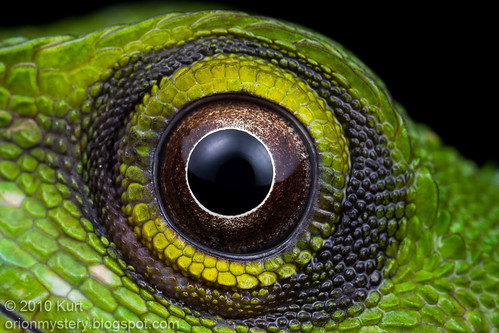Having used a few different types of macro lightings/lighting techniques - natural light,
Fill Flash, pop-up flash, bracketed speedlight,
MR-14EX ring flash
and
MT-24EX Twin Flash
- I thought it might be interesting to do a brief comparisons of all these.
Natural light shot of a butterfly: you can view the exif by clicking the image. That'll take you to my flickr, then "More Properties" to view the full exif.
Edit: Flickr made changes to its page so in order to view exif, you need to click on the camera model in this line "This photo was taken on August 19, 2010 using a
Canon EOS 40D" at the top right of the image page:
Another way is to click "Actions" then "View Exif Info"

NL is free, of course :)and you get this nice, non-black background. There may not always be enough NL light to give you a decent shutter speed for a handheld shot at your required DOF, so a tripod might come in handy, or in fact, really necessary! Increasing the ISO is another option if you don't mind noise. More tips on natural light macro photography is
here.
A
full flash shot of the same scene. See the black background I was talking about? All light in the shot was provided by the flash. If there is no immediate bg, then it'll be black/dark. More on full flash macro photography
here.

Sometimes a bit of
fill flash is required to lift the shadow:

More on Full Flash vs Fill Flash macro photography
here.
MR-14EX
shot...note the ring light reflection in the spider's eyes:D. Image courtesy of
Lordmint
 MR-14EX
MR-14EX
works fine right out of the box with no further diffusion required. But it's said that it lacks the motion freezing capability of its bigger brother,
MT-24EX
. The only sure way to confirm this is to look at the flash duration at different power outputs for both flash systems.
However, my friend Hisham figures out a way to diffuse ringflash nicely. Check out how he does it
here.
Now a sample shot from the
MT-24EX

Note the twin reflection in the eyes. I toned down the twin reflection a little in photoshop.
MT-24EX
is a tough beast to tame and it takes a lot of experimentation to get the right light you want. I am still experimenting with it.


DIY diffusers for
MT-24EX
on left, and MT-24EX on a 40D on right
(click image to go to my flickr where you can view notes on the images)
I have been using the
Concave Diffuser for my MT24EX since February 2010 and extremely happy with the diffusion.
Before I bought the
MT-24EX
, i used a diffused
580EXII
on a Hakuba LH1 bracket.


Hakuba LH1 bracket on left and DIY Diffuser for
580EXII
on right
(click image to go to my flickr where you can view notes on the images)
You can also get a foldable softbox like this on
Amazon.


Now a couple of sample shots from a diffused
580EXII
on Hakuba LH1 bracket

Note there's no twin reflection and the light is softer/nicer.

Note the shadow below the eyes. The shadow issue can be more pronounced in certain shots depending on the shooting orientation and insect shapes.
I like the light from a diffused
580EXII 
on bracket better except the shadow issue and the weight.
MT-24EX
on the other hands, is much lighter and no shadow issue. Plus the
MT-24EX
is less likely to get in the way when shooting in bushes/grasses becuase it's not as bulky as the
580EXII
's diffuser.
Now let's compare the shots of a similar reflective tiger beetles lit with a
MT-24EX
and diffused
580EXII
respectively.

A highly reflective blue tiger beetle lit with a diffused
580EXII
. Note the nice soft light and highlight, and the shadow at the lower part of the insect.
Now a similar shot lit by the
MT-24EX

Note the harsher highlight. No shadow issue though.
However, since the introduction of the
Concave Diffuser, MT24EX lighting has improved by leaps and bounds. Take a look at this image:
Green crested lizard's eyes, shot at 1:1, MPE65 and MT24EX with concave diffuser. More info about the concave diffuser
here.

Don't be intimidated by these fancy setups/gears though. You can shoot great macro with just the basic.
When i first bought my D80 and
Tamron SP90
, i shot with just the popup flash, diffused by a styrofoam plate. It looks like this:

click image to go to my flickr where you can view notes on the images
Now a few sample shots with the diffused popup flash setup:


Another cost effective but more light efficient method I used before was this DIY Snoot Diffuser, which works nicely with speedlight. Check out this post for step by step guide on
DIY Snoot Diffuser.

again, click image to go to my flickr where you can view notes
As usual, a couple of sample shots from this snoot-diffuser setup

A lovely, female giraffe weevil..my favorite weevil

Yes, you do get a bit of shadow issue with the snoot-diffuser too. IMHO, i think this setup is good enough even up to 2:1. Beyond that, you should get a flash bracket or a dedicated macro flash.
As an Amazon Associate I earn from qualifying purchases.
